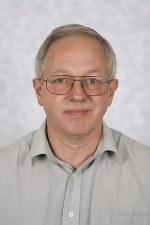Research
Cyclic processes. Such processes occur in a variety of areas of Chemical Engineering, and we have studied thermal regenerators, pulsed laminar flow and gas separation by adsorption. We have developed a matrix formulation for the linear modelling of thermal regenerators which can be used to describe aspects of transient behaviour. Work with Ian Wilson has developed analytic solutions for velocity distributions in pulsed laminar flow, with potential applications in cleaning. We have investigated cyclic air separation by rapid pressure swing adsorption, where the preferential adsorption of nitrogen over oxygen on an adsorbent is utilised; the process involves the interaction of adsorption, dispersion and pressure dynamics in the bed. Work with Bill Paterson has addressed fundamental aspects of modelling, including the formulation of the model, the approach to steady state, and the use of wavelets to deal with shocks – sharp changes in composition - which pass through the bed after initial pressurisation.
Particle technology. We have studied two areas of the dynamics of granular materials: moving beds, with Bill Paterson, and rotating cylinders with John Davidson. Work on beds of monosized particles moving downwards in a vertical cylinder has demonstrated significant gas flow maldistribution. The effect can be quite dramatic in the case of a mixture of particles. Rotating cylinders are widely used in industry for, for example, calcining, mixing and drying, and there is also a significant academic interest due to the rich range of behaviours exhibited by the particles: avalanching, rolling, mixing and segregation, in both axial and radial directions. We have studied a variety of the aspects of particle motion in a slowly rotating cylinder with axis slightly inclined, as is the case for continuous flow processes. A theoretical model for transient behaviour has been developed and successfully tested experimentally. Recent work in association with Stuart Scott of the Department of Engineering uses distinct element modelling to explore axial dispersion, axial and radial segregation, and the characteristics of avalanching.
Bubbles in downflows. With Professor Rex Thorpe, now at the University of Surrey, we have studied the characteristics of large bubbles beneath spargers in downflows, proposing a correlation for bubble runaway, and investigating the consequences for the dynamics of U-tube circulating bubble columns.
Biography
BA, Mathematics, University of Cambridge, 1970
PhD, Applied Mathematics, University of Cambridge, 1974
Publications
J.R. Third, D.M. Scott and S.A. Scott, Axial dispersion of granular material in horizontal rotating cylinders. Powder Technology 203, 510-517, 2010.
X.G. Qi, D.M. Scott and D.I. Wilson, Modelling laminar pulsed flow in rectangular microchannels. Chemical Engineering Science 63, 2682– 2689, 2008.
D.M. Scott and J.F. Davidson, Dynamics of particles in a rotary kiln, invited Chapter in Advances in Granular Materials: Fundamentals and Applications, eds S.J. Antony, W. Hoyle and Y.L. Ding, Royal Society of Chemistry, 2004, ISBN 0-85404-586-4, pp 319-335.
W.R. Paterson, E.L. Berresford, D.L. Moppett, D.M. Scott, V.K. Simmons and R.B. Thorpe, Gas flow maldistribution in moving beds of monosized particles, Chemical Engineering Science 55, 3515-3527, 2000.
Y.H. Lee, D.M. Scott and R.B. Thorpe, Energy losses due to large bubbles beneath spargers in circulating bubble columns, Chemical Engineering Science 55, 97-112, 2000.
T.S.Y. Choong, W.R. Paterson and D.M. Scott, Axial dispersion in rich, binary gas mixtures: model form and boundary conditions, Chem. Engng. Sci. 53, 4147, 1998.
L. Zhang and D.M. Scott, A unified approach to discretisations of the linear analysis of thermal regenerators, International Journal of Heat and Mass Transfer, 36, 1035-1041 (1993).


